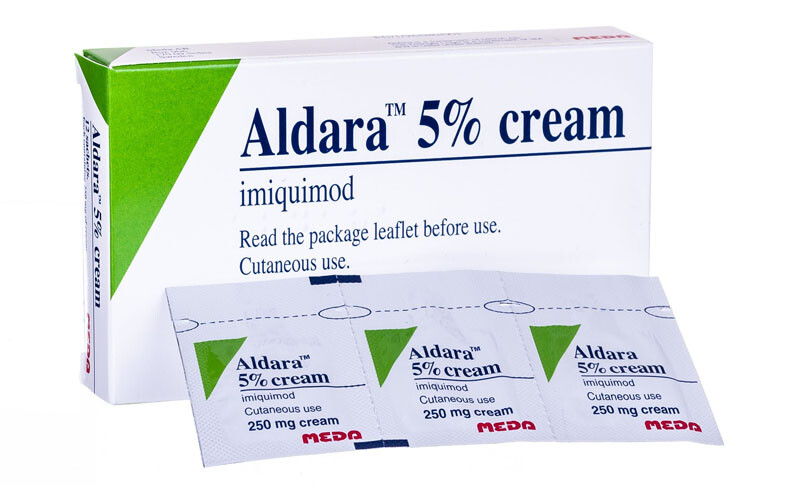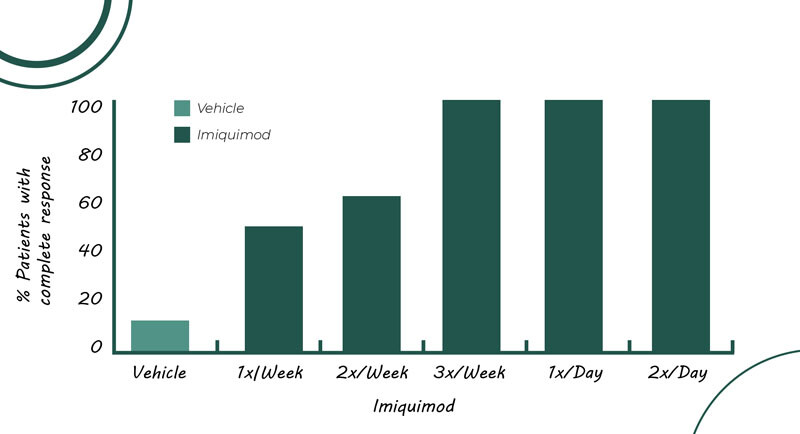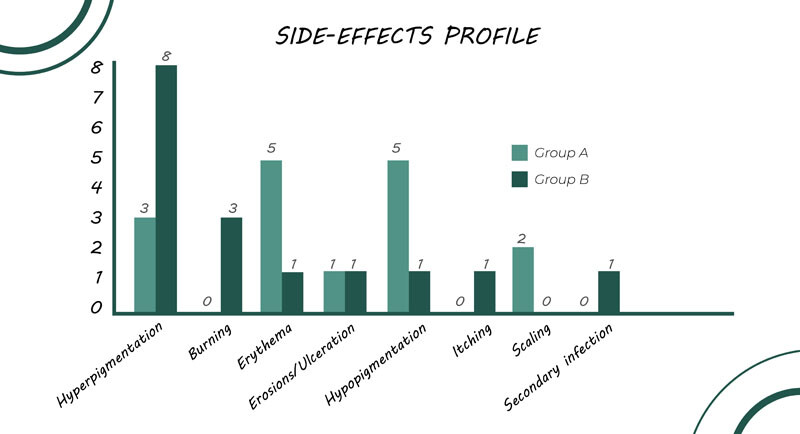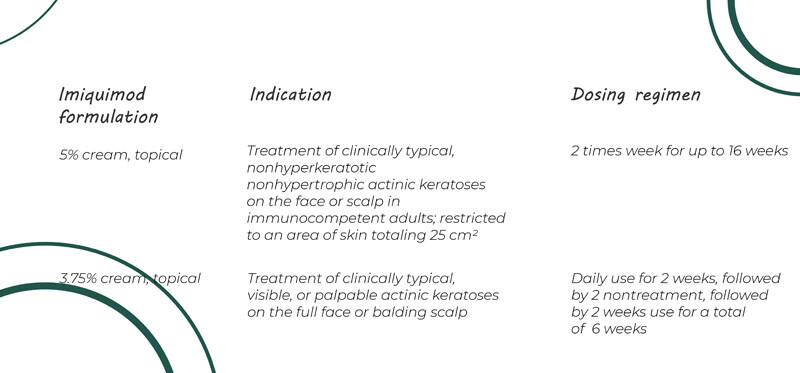Buy Imiquimod Cream from our sponsor, online pharmacy store. Aldara is one of the brands under which Imiquimod cream is sold worldwide. It is of the same high quality as other brands. You can place an order and buy Imiquimod Cream online over the counter today at lowest prices.
Drug Nomenclature: Aldara
International Nonproprietary Names (INNs) in Main Languages
- Synonyms: Imiquimod; Imiquimodum; Imiquimoda; Имиквимод
- INN (English): Imiquimod [rINN]
- INN (Spanish): Imiquimoda [rINN]
- INN (French): Imiquimod [rINN]
- INN (Latin): Imiquimodum [rINN]
- INN (Russian): Имиквимод [rINN]
Chemical Information
- Chemical Name: 1-(2-methylpropyl)-1H-imidazo[4,5-c]quinolin-4-amine
- Molecular Formula: C14H16N4
- CAS Number: 99011-02-6
Classification Codes
- ATC Code: D06BB10
What Is Imiquimod Cream And How Is It Used?
Imiquimod Cream stimulates the human immune system: it increases the production in the body of interferons, protein molecules that attack viruses and cancer cells. Today this drug is recommended for the treatment of:
- Ulcerative condylomas, which are neoplasms similar to warts in the form of cauliflower on a thin “stalk” (the disease is sexually transmitted);
- senile keratoses (benign growths in the form of plaques covered with hard scales);
- Basal cell carcinoma (skin cancer);
- Molluscum contagiosum (a viral skin disease transmitted through contact with the skin) papillomas;
- common warts.
Before you buy Imiquimod cream, which you can also use at home, you should consult your doctor.

Clinical studies show that using Imiquimod can reduce the size of tumors or get rid of them altogether – about 80% of patients achieve complete recovery of condylomas, with 8-10% showing significant improvements. During the treatment of basal cell carcinoma, a positive effect is achieved in 75 cases out of a hundred, and no scars are left on the skin (as after surgical intervention). The duration of drug administration usually makes up 12-16 weeks, depending on the severity of the disease.
The traditional route of administration of Imiquimod: apply the cream on the affected areas of the skin for 6-8 hours (at night) three times a week, preferably every other day. In the morning, clean the skin of the cream with warm water and soap. Among the Imiquimod side effects identified are redness of the skin, itching, and swelling.
Imiquimod represents a group of immunomodulators. The main substance Aldar causes activation of the immune system. The action of the drug is not a direct antiviral effect – Imiquimod acts as an antitumor agent that enhances the production of α-interferon and other cytotoxins. They, in turn, recognize cells affected by the virus and provoke the development of a reaction aimed at destroying them. In this way, Imiquimod helps the body cope with some viral infections with its own strength.

The product is characterized by insignificant absorption through the skin. Imiquimod penetrates into the bloodstream in small amounts and is rapidly excreted mainly through the kidneys and, to a lesser extent, through the gastrointestinal tract. The main substance has no peak blood concentration (no significant amount has been found in studies).
Limitations Of Use
Imiquimod is contraindicated in persons with hypersensitivity to its active or excipients. It is not recommended for use in children under 18 years of age since there is no data on its safety for this category of patients.
Before Using
To make sure you can safely take Imiquimod, tell your doctor if you have any of these conditions:
- sunburn or other skin problems;
- weak immune system or autoimmune disorder;
- graft versus host disease;
- if you have recently been treated for actinic keratoses or genital warts with surgery or other medications/
Imiquimod can weaken the rubber that condoms or diaphragms are made of. If you use a condom or diaphragm, these items can break if the rubber loosens and an unplanned pregnancy can occur. It is not known if imiquimod passes into breast milk or if it can harm your baby. Do not use this medicine without telling your doctor if you are breastfeeding.
What Are The Possible Side Effects
As with any medication, the cost of using Imiquimod cream can be expressed in the form of some unwanted reactions. Patients usually have to deal with:
- Itching, local pain sensations.
- Infections.
- Burning Or Stinging Of Skin (Mild)
- Diarrhea
- Fatigue
- Flaking Or Peeling Of Skin
- Hair Loss
- Hardening Of Skin
- Headache
- Heartburn Lightened Or Darkened Skin Colour Where Skin Is Treated And Others
- Paresthesias.
- Migraine.
- Nausea.
- Myalgia.
- Fever.
- Flu-like symptoms.
To cope with local skin reactions, the cream should be washed off immediately with water and soap. Reuse Imiquimod only after all the side symptoms have stopped.

Dosage And Administration
Apply 3 times a week, before bedtime, and leave on skin for 6 to 10 hours. Treatment should be continued until the lesions have disappeared, but not for more than 4 months if condylomas have appeared.

How To Apply
How to Use the Cream:
- Imiquimod cream is applied in a thin layer and rubbed into the clean surface of the affected area until completely absorbed. Do not apply the drug to healthy areas.
- Do not take a shower or bath for 6-10 hours after applying the cream to the skin.
- At the end of this time, the cream is washed off with soap and warm water.
- Using too much cream or prolonged contact with the skin may cause a reaction in the area of application.
- Before and after applying the cream you should wash your hands with warm water and soap.
Actinic Keratosis
Keratosis or hyperkeratosis is a noninflammatory form of dermatosis that is accompanied by excessive keratinization of the skin. For the healthy skin of any person, the process of keratinization is a normal physiological condition. The keratinization process provides one of the most basic functions of the skin: protective.
Normally skin cells move as a result of their vital activity from the lower skin layer to the upper one and gradually accumulate keratin, a protein which makes them more solid and resistant to external influences. The upper layer of skin is nothing more than completely keratinized cells or horny scales, which in the course of human life are sloughed off and replaced by new ones. Such cells have no vitality, but, thanks to keratin, they provide protection to the living cells underneath from negative environmental factors.
The following types of hyperkeratosis manifestations are the most common:
- Actinic (solar) keratoses on the face and body (keratomas). Develops due to excessive exposure of the skin to ultraviolet rays and its photodamage. It looks like flat, rough spots of yellow or brown color;
- Palmar and plantar keratoderma – calluses, corns on the soles of the feet and palms, and heel cracks. They form in areas exposed to prolonged friction or pressure, infectious and fungal diseases;
- Follicular or hairy keratosis (“gooseflesh”). Dermatosis occurs as a result of both accelerated keratinization and impaired physiological sloughing of horny scales. Against this background, the normal sebum secretion is disturbed and local inflammation of the hair follicles on the body joins in. It looks like a rash of small, multiple nodules of bright pink and gray on the face, shoulders, legs, buttocks;
- Seborrheic keratosis is the most common form of hyperkeratosis. It is a hyperpigmented “plaque” with clear boundaries of light to dark brown in color, covered with keratinized skin. It can be either single or multiple.
- Old age keratosis – develops in old age in the form of spots of beige-brown color and is localized on the face, shoulders, back, and back of the hands.
Superficial Basal Cell Carcinoma
Basalioma is the most common type of skin cancer; more than 4 million new cases are reported annually in the United States. Basalioma most often develops in individuals with a history of light skin and insolation and very rarely in patients with darkly pigmented skin.
Basal cell carcinomas are also associated with genetic syndromes and may result from sebaceous gland nevi. Xeroderma pigmentosum is an inherited DNA repair defect that can lead to non-melanoma skin cancer and melanoma. Basal cell nevus syndrome (Gorlin syndrome) is an autosomal dominant disease that leads to multiple basal cell carcinomas as well as medulloblastomas, meningiomas, and ovarian cancer. Bazex syndrome is a rare genodermatosis that can lead to the early development of multiple basal cell carcinomas.
Imiquimod cream is used for topical treatment of small superficial basals.
Genital Warts
Human papillomavirus (HPV) is present in almost 80% of people. It can manifest immediately or after a long time. One of the key factors in its manifestation is a weakened immune system. More than 100 types of HPV have now been identified. Some types of HPV manifest on the skin, while others, such as HPV 6, 11, 16, 18, 30, 31, 33, affect mucous membranes.
Manifestations of this virus – condylomas, warts, or papillomas – are a kind of reservoir for it, in which it accumulates and can become embedded in the DNA of epithelial or mucosal cells. In doing so, the virus causes changes in the cells that can contribute to the development of a cancerous tumor. There are a number of types of HPV that are a high oncogenic risk. The presence of these types of viruses in the body increases the likelihood of developing cancerous diseases by a factor of 60, primarily genital cancer, in both men and women.
Penetration of the virus into the skin or mucous membrane cells can occur through microcracks and scratches, but HPV can also seep in without any damage. Human papillomavirus (HPV) is transmitted by scales that peel off from neoplasms and lesions. The virus can be transmitted from person to person through close physical contact, during sexual intercourse. But you can also catch the virus through common household items, such as towels, hygiene products, manicure tools, etc. From the moment of infection to the manifestation of HPV can take up to six months.
Imiquimod 5% cream is used for topical treatment: external genital and perianal warts;
All Conditions
The drug is effective in the treatment of actinic keratoses and basal cell carcinoma (basalioma). External genital and perianal warts (condyloma acuminata); small superficial basaliomas; clinically typical, nonhyperkeratotic, non-hypertrophic actinic keratoses on the face or head in patients with normally functioning immune systems, when the size or number of lesions limits the efficacy and/or advisability of cryotherapy and other local methods of treatment are contraindicated or less advisable.
How The Medication Is Supplied
You can order Imiquimod in the pharmacy in the form of a cream for external use. It is white or light yellow in color.
Dosage Forms And Strengths
Overdose of the remedy is unlikely. Since the drug is practically not released into the systemic bloodstream. Patients who have used the external cream have not had any adverse reactions. But if the drug enters the gastrointestinal tract, it will cause severe nausea, vomiting, indigestion, malaise, general weakness, muscle soreness. In particularly severe cases, a rise in body temperature may occur. In such cases, seek immediate qualified medical assistance.
Storage And Handling
Imiquimod cream does not need any special storage conditions. The main thing, once you can buy it, is to choose a place for storage that children do not have access to. Also, take care that the temperature does not exceed the 25 °C mark. You can use Imiquimod medication for 2 years from the date of manufacture. Do not use expired medication.
What Other Drugs Will Affect Imiquimod
Imiquimod cream is easily combined with many drug groups because of its reduced cutaneous absorption into the bloodstream. But you should not combine the cream with other immunomodulators because the cream is already an immunosuppressant. When using combination therapy, the minimum time interval between medications should be one hour.
Precautions Or Warnings For This Medication
Do not use Imiquimod in cases of:
- Inadequate age for therapy.
- Hypersensitivity to the main substance or additional components.
- Breast-feeding.
During pregnancy, Imiquimod cream should be used only after weighing the risk/benefit ratio.
Can Imiquimod Be Sold by Mail Order?
Yes, Imiquimod is available for mail order. It can be delivered by mail, ensuring the medication’s safety and good quality. The drugs’s storage conditions allow it to be sent in a parcel without losing its quality and effectiveness.
Alternatives To Imiquimod 5% Cream
The remedy has several analogs, which are similar in pharmacological properties but differ in the active component. Such drugs include Acyclovir, Agerp, Acyclostad, Virolex, Herpetad, Zovirax.
These medications have an antiviral effect. They inhibit the growth and development of a particular group of viruses and bacteria parasitizing in the human body, mainly on the skin. Change of medication is made in consultation with the attending physician, who prescribes the instructions. If you replace the medicine with another, it may not be effective against viruses.

















